A hunter's guide to first aid
by Art Walshaw
Hunter 4
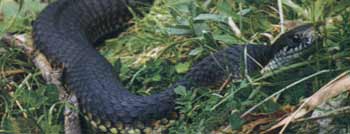 Accidents happen easily when you're in the scrub. Generally they are
not too dramatic and you have the skills to deal with them. This
article is no substitute for proper first aid training, though it
raises your responsibility to yourself and mates when heading bush.
Accidents happen easily when you're in the scrub. Generally they are
not too dramatic and you have the skills to deal with them. This
article is no substitute for proper first aid training, though it
raises your responsibility to yourself and mates when heading bush.
The nature of a hunt will dictate the extent of the first-aid kit you require. Day walks mean help is not too far away and basic supplies should handle any eventuality. However, when heading bush for prolonged periods a comprehensive kit and the knowledge to use it are essential.
You can make up your own kit or buy one of the numerous commercial kits available. Discuss your requirements at your local chemist or on your next visit to the GP.
Many people now carry mobile phones in the scrub, but you can't rely on coverage in an emergency situation. As a result you must be prepared to stabilise a victim until help arrives.
The following examples provide basic information to stabilise an accident victim until medical assistance arrives. It is still imperative that you and your hunting buddies complete recognised first aid certificates. For information on local courses nationwide, contact the St John's Ambulance Service on 1300 360 455.
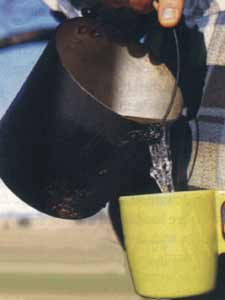 Burns
Burns
A common accident around camp is a burn. Normally these result from
cooking fires or camping stoves. Since I started including an old oven
mitt in my tucker box, handling hot billies and utensils has been a
whole lot safer - simple but effective.
Never remove clothing that may be stuck to burns and avoid breaking blisters. Don't apply lotions or creams to seriously affected areas. Burn creams are of course permissible on light scalds or non-blistered areas.
Immediate first aid should be to place the affected area under cold running water for up to 20 minutes. This will reduce further deterioration and help minimise pain.
Cuts
Some years back a mate and I were camped on the shores of Lake
Jindabyne in the Snowy Mountains. We'd spent the previous week fly-
casting to trout and managed to catch and release some very nice fish.
On our final evening, I'd cooked a roast in the camp oven to celebrate the end of an enjoyable trip. Whether it was my happy mood or haste to carve, I accidentally severed the tip of my index finger to the bone. Many years later, I still have no feeling in the finger due to nerve damage.
Immediately remove cycling adjacent to any deep wound and apply pressure bandages. Pressure bandages are a large clean pad and bindings to keep the wound closed. Ensure the dressing is not too tight to cut off circulation.
Whenever possible, raise the wound above the heart. This may mean laying the patient down and raising leg injuries. Keep the person as comfortable as possible and if severe bleeding continues, replace pads and apply direct pressure with hands over bandages to hold the wound closed.
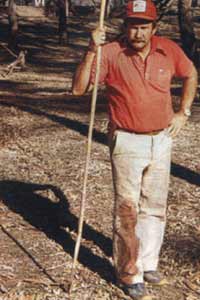 Bites and Stings
Bites and Stings
The Australian bush has its fair share of pasties that bite and sting.
Snakes, spiders, wasps and a variety of nettles are just some of the
problems careless stalkers may encounter.
During a fishing trip a few years back, my dad and I fly camped on the delightful banks of the Namoi River. In the wee hours I felt an insect crawl across my face as I lay under the tarp.
When I brushed it away the crawly released an acid that ate into my eye and resulted in an early morning dash to town. The result was several weeks of treatment and an eye patch.
In the event of snakebite, lay the victim down comfortably and apply a pressure bandage to the bite site. Bandage with firm pressure from the bite towards the heart - eg, up the arm or leg and immobilise the limb with a splint Never apply pressure to spider bites, as this can increase actual pain.
Many insect stings, such as one from a bee, can be lessened by scraping the skin surface with a knife to remove the actual sting.
Patients of stings and bites quite commonly experience shock. This is best managed by ensuring the victim is comfortable and warm. Do not give alcohol, food, drinks or allow them to smoke. Get help as soon as possible and reassure the patient that everything is under control.
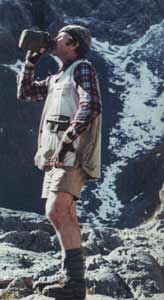 Over-exposure
Over-exposure
Each November I try to head out west for a few days chasing
wheat-munching hogs. When the wheat crops are ripe, they draw pigs from
kilometres away and the stalking can be exceptional.
During one trip we gave the property owner a hand to clean out some silos before harvest. Keen to repay his kindness for allowing us to hunt the property, I got stuck in shovelling out the old wet grain.
Within about 15 minutes I had collapsed and had to be hauled out through the silo lid. Heat exhaustion in the galvanised silo had struck me quickly and it took the rest of the day to get me re-hydrated.
Heat exhaustion is immediately treated by moving the person into the shade and giving small but frequent sips of water Loosen any restrictive clothing and if severe sweating is apparent, add a little sugar to the water drinks. Fan the victim with a towel or similar and cover with damp sheets or sponge down to reduce skin temperature. Take care not to overcool and at any sign of shivering stop cooling the patient.
Victims of excessive cold conditions (hypothermia) should immediately be moved into shelter and given warm, dry clothing. Cover the victim with blankets or place in a sleeping bag. It is okay to give warm, sweet drinks but never alcohol and never rub the affected areas of skin.
Sprains and Strains
Back in the late 1980s, I spent a couple of weeks in the Kaimanawa
Mountains in northern New Zealand chasing sika. A chopper flight had
put me in the heart of good stalking country and although the big stags
eluded me, I managed to keep the meat safe full and brought a couple of
good skins home. One evening I was stalking some manuka terraces where
I'd seen some stag sign the previous evening. I snuck to the lip of a
terrace to survey the country below and without warning the ground gave
way.
Although I only tumbled probably 20 metres down the steep gully slopes, I could have easily injured a leg. The country was wild and no-one would have missed me until the pick-up, which was still five days away.
Ensure that casualties are placed in a comfortable position and if possible apply ice or a damp cloth. Never place ice directly on the skin, always put it in a plastic bag or similar. Swelling is a real possibility, so take care if removing articles such as boots, they may well not go back on for some time.
CPR and EAR If this article does nothing more than encourage you to take a registered first-aid course, then it has served a mighty purpose. Of all the skills you will acquire, perhaps none is as important as resuscitation techniques known as CPA/EAR. I don't intend to outline the procedures here, as they need to be demonstrated and practised - hands on. Ensure you become competent; this will save a life.
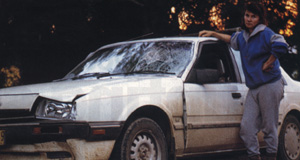 It may seem that during my bush adventures I've just been unlucky;
however, the fact remains that when we head into the hills and away
from day-to-day living, there is a myriad of dangers that may overtake
us. On all these occasions I have been well enough equipped to get over
any injury situation.
It may seem that during my bush adventures I've just been unlucky;
however, the fact remains that when we head into the hills and away
from day-to-day living, there is a myriad of dangers that may overtake
us. On all these occasions I have been well enough equipped to get over
any injury situation.
The key to handling emergencies in the bush is to carry the right gear, know how to use it and take any precautions necessary. It goes without saying that your partners must also be competent in bush first aid in the event that you are incapacitated.
If possible, always leave someone with a patient while you go for help. This ensures someone can provide reassurance during the wait and also help locate your position when rescuers arrive.
Guesswork is no substitute for proper first aid training. Complete a registered course and head bush safe in the knowledge that if the worst happens you can confidently take the correct response.
Captions
Image 1: Although a potential menace, snakes are
seldom a problem if care is taken. Learn the correct first aid response
and you'll be right.
Image 2: Burns are common camp accidents. Always
take care and watch kids around the camp-fire.
Image 3: A simple mistake with an unguarded
broad head spelt trouble for the author's old man. It could have been
worse.
Image 4: Heading into the wilds, such as the
back-country of New Zealand, instantly puts you at risk. Ensure you are
well prepared and your partner is trained.
Image 5: A collision with stock on an unfenced
country road could have resulted in more injury. Take care when driving
in rural areas.
